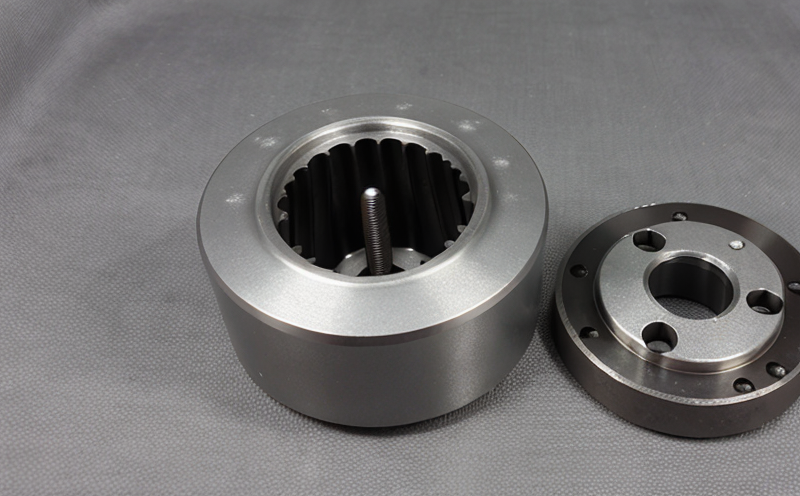ISO 6892 Tensile Testing of Metallic Additive Materials
The ISO 6892 tensile testing method is a critical procedure used to evaluate the mechanical properties of metallic materials, including those produced by additive manufacturing (AM) processes. This test assesses the strength and ductility of metals under controlled loading conditions, providing data essential for quality assurance, material development, and product design in sectors such as aerospace, automotive, and medical.
For powder metallurgy and AM materials, this testing method is particularly important due to the unique properties that can arise from different alloy compositions and processing techniques. The tensile test helps determine whether a material meets specified performance requirements, ensuring it can withstand the stresses encountered in real-world applications without failure.
The process involves subjecting a cylindrical or rectangular specimen to uniaxial tension until fracture occurs. During testing, several key parameters are monitored including load, displacement, and strain rate. The results yield critical information about the material's yield strength, ultimate tensile strength (UTS), elongation at break, and reduction of area.
Proper specimen preparation is paramount for accurate test results. Specimens must be machined from bulk parts or castings using precise methods to avoid introducing flaws that could affect the outcome. The testing equipment used should comply with ISO standards for precision and repeatability.
| Applied Standards | Details |
|---|---|
| ISO 6892-1:2009 | General requirements, dimensions of specimens, testing machine capabilities, and test setup. |
| ISO 6892-3:2014 | Test methods for tensile testing of metallic materials, including specimen preparation and procedures. |
The results from this testing method are often used to compare new AM alloys with traditional manufacturing processes. It also helps in validating the reliability of additive manufacturing techniques by ensuring that they produce parts with equivalent or superior mechanical properties compared to conventionally manufactured components.
Understanding the nuances of ISO 6892 tensile testing is crucial for those involved in material science, quality assurance, and R&D within industries reliant on high-performance metals. By adhering strictly to these standards, labs can ensure consistent, reliable, and reproducible test results that contribute significantly to product development cycles.
Applied Standards
| Standard | Description |
|---|---|
| ISO 6892-1:2009 | General requirements for tensile testing of metallic materials. |
| ASTM E8M-20a | Tensile test methods for metallic materials using metric units. |
| EN 14725:2013 | General requirements and test methods for tensile testing of metallic materials. |
The selection of appropriate standards ensures that the testing procedures are aligned with international best practices, thereby enhancing the credibility and acceptance of results across different regions and industries.
Why Choose This Test
Tensile testing is an indispensable tool in metallurgy for several reasons. Firstly, it allows engineers to identify the optimal parameters for additive manufacturing processes by evaluating how various alloy compositions behave under stress. Secondly, this test aids in detecting any inconsistencies or defects within the material that might compromise its integrity during use.
For quality managers and compliance officers, ensuring adherence to ISO 6892 standards helps maintain regulatory compliance while also providing assurance of product safety and reliability. R&D engineers can leverage these tests to innovate by exploring new materials and optimizing existing ones for better performance.
In the realm of procurement, knowing that suppliers are using reputable testing methods like ISO 6892 instills confidence in the quality of the materials being sourced. This transparency supports decision-making processes and fosters trust among stakeholders involved in supply chain management.
Environmental and Sustainability Contributions
- Promotes recycling: By ensuring that metals meet stringent mechanical property requirements, this testing method encourages efficient use of raw materials through recycling programs.
- Reduces waste: Accurate tensile tests help minimize the amount of material discarded during manufacturing processes by identifying suitable candidates for additive manufacturing.
- Eco-friendly operations: Compliance with international standards ensures that all stages of production are conducted sustainably, from sourcing raw materials to final product disposal.
Through these contributions, ISO 6892 tensile testing plays a pivotal role in advancing sustainable practices within the metallurgy and material science communities.





